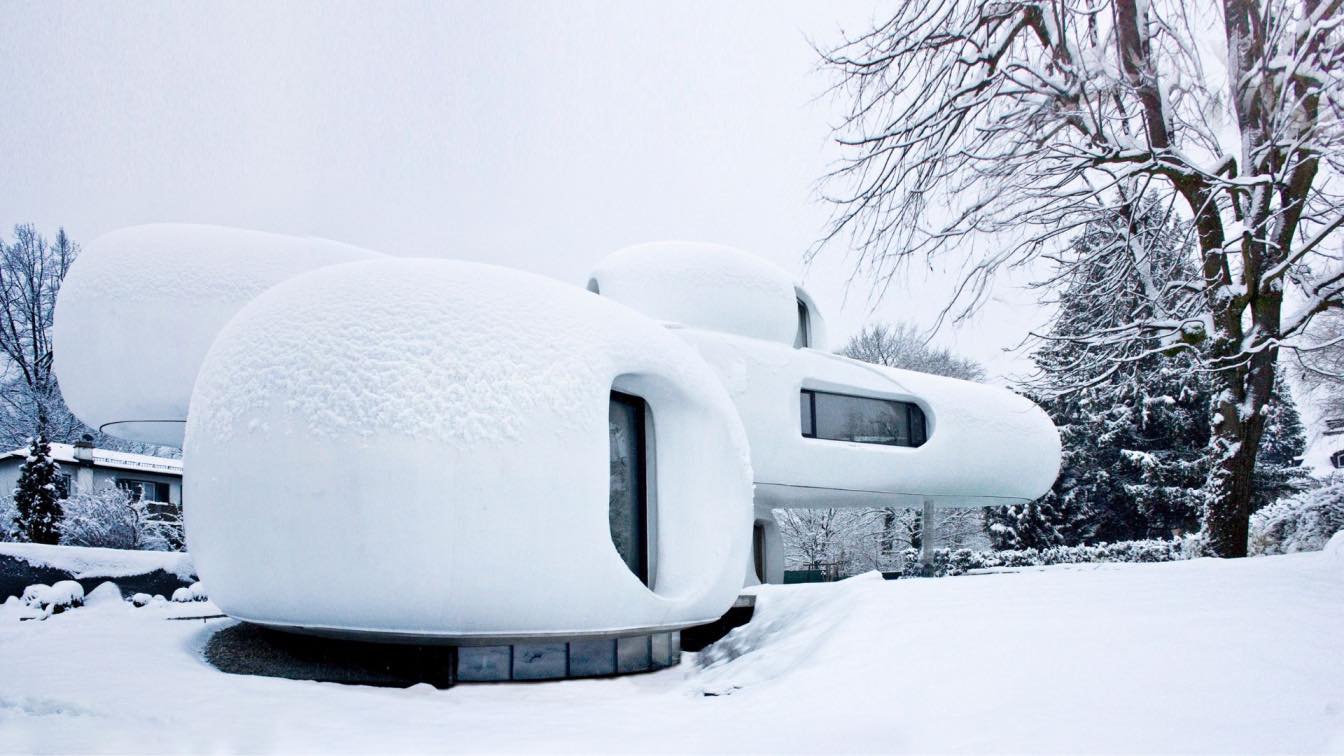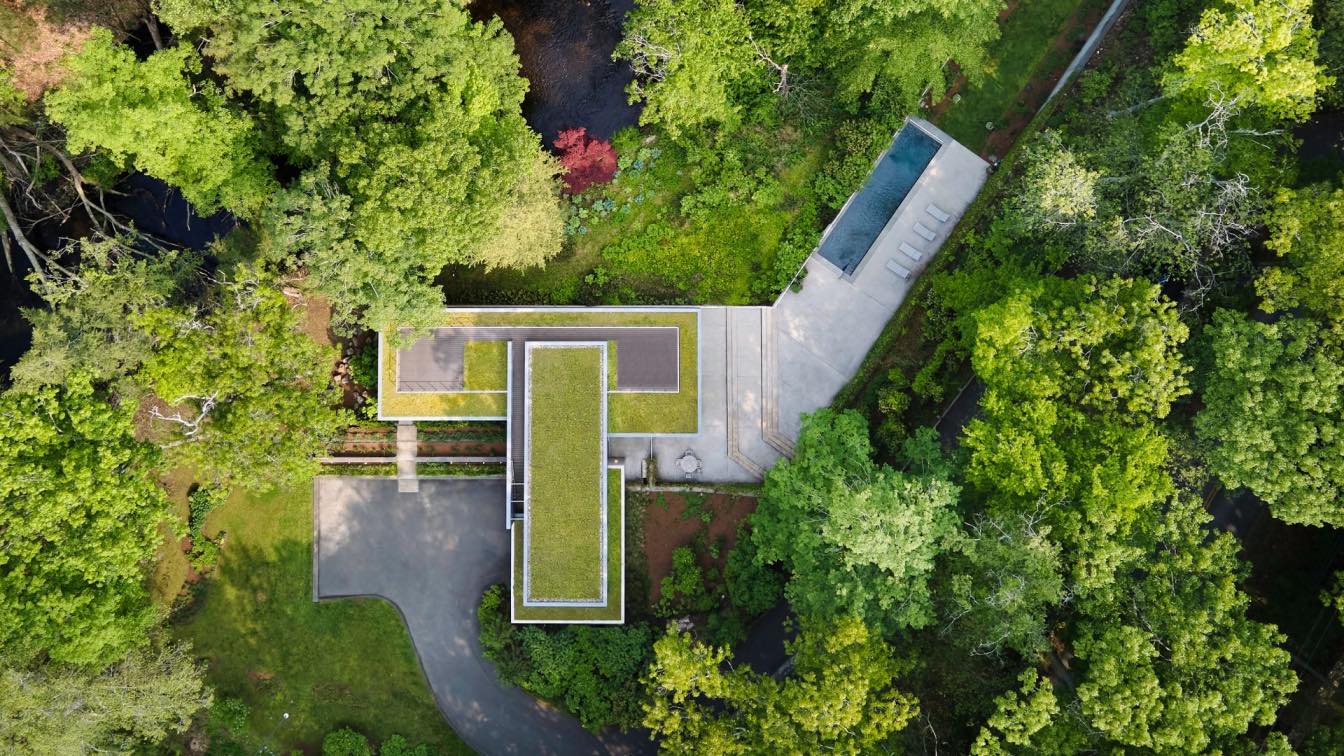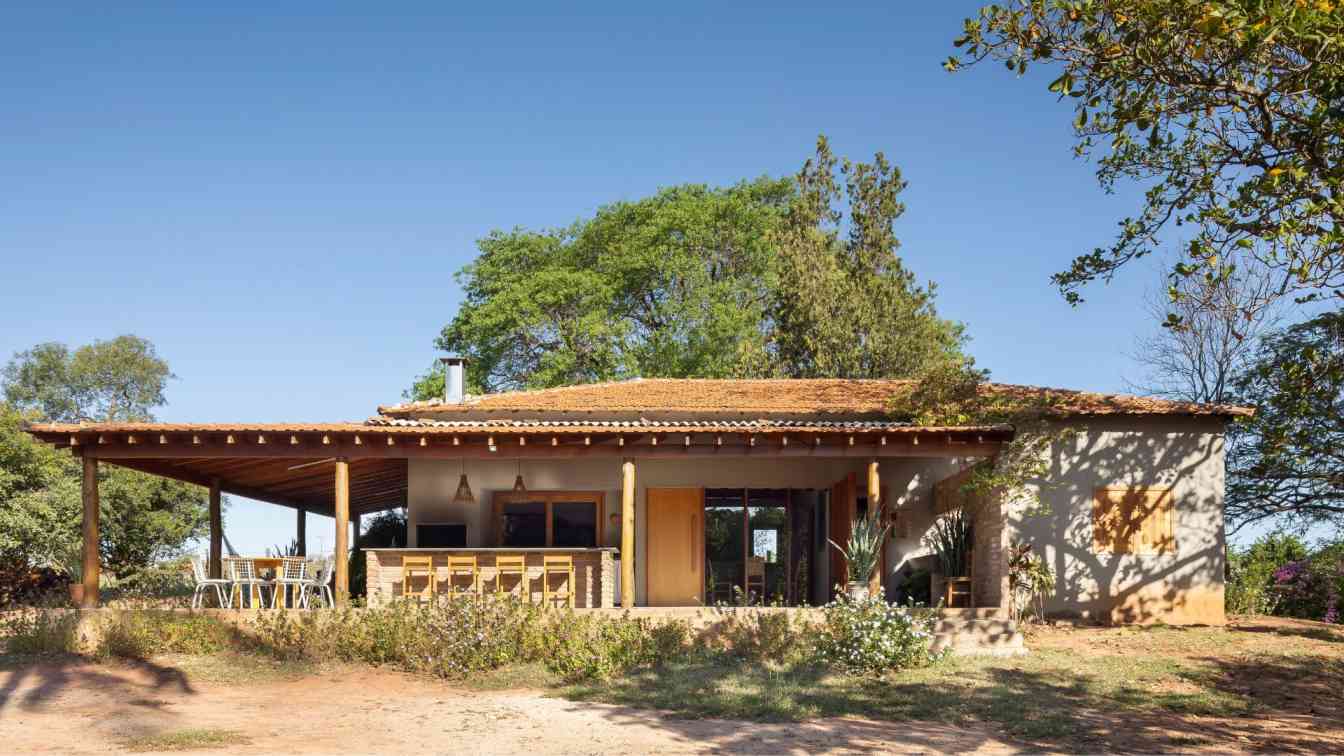Lechner & Lechner Architects: The basic idea of this project was to visually interweave the living space with its surroundings. In the first step, the most important points of view were identified via google earth. These visual landmarks in this project include the Leopoldkron Castle, the Leopoldskorner pond, the fortress Hohensalzburg and the Untersberg. In the next step, a floor plan was chosen that maximizes these visual relationships. The free-form floor plan and a three-dimensional shape of the building allow this optimization of the lines of sight. The relatively thick, freely formed window soffits direct the gaze in a targeted manner. The window soffits and the free-formed ones make it possible to draw the eye only to the visual highlights and hide the rest.
The result was two slender bodies offset from each other with a central opening. In the entrance situation on the ground floor, the space is narrowed by the structure of the ancillary facility and the main body. The slender structure on the ground floor opens a view of the garden with the associated water area and the sculptural staircase.
The ground floor spaces are intertwined with nature through their shape and the exterior design of the garden.They convey a homely feeling almost a bit like in a hobbit cave. Visually, the own garden, the Leopoldkroner pond and the Untersberg are the main visual reference points.

The outdoor space is designed as a mediator to the environment. The water surface is aligned towards the pond and is slightly elevated in the terrain. Visually, the two water surfaces connect with each other. The living sculpture itself can be experienced via an external spiral staircase. Through the language of form and the planting, the residential sculpture connects with the landscape.
The reference to the outside space also plays a central role in the design of the first floor. The living area is connected to the outside space on both sides. This is made possible by two spacious terraces. A terrace faces the Leopoldskroner pond, fortress Hohensalzburg and Schloss Leopoldskron. The other is oriented towards the private sphere. The living sculpture can be walked through in a circle over the two vertical openings inside and outside.
Constructively, this project relied on the timber frame construction method. For this purpose, wooden stands were cut to the right shape with the CNC milling machine and then planked with boards. The outer wall is generously insulated between the individual wooden studs. Polyurea was used for the facade coating. This material is used as a coating in rhinoceros tanks in zoos and was chosen for its rural nature.

















































About
The architecture office Lechner & Lechner has been dealing with a wide range of architectural tasks and issues since 1987. In particular, building in a historical context and the topic of sustainable building in all its facets have been part of our core competencies from the very beginning. The functions of the European city as well as the prevention of urban escape by uniting and interweaving areas of life is one of our heartfelt concerns.
With regard to the materialization of our projects, experience has been gained in many types of construction over the decades. Thanks to our focus on sustainability, we were able to realize many projects in general in wood construction and in the inner-city area with its spatial densification in wood hybrid construction. Maximizing the quality of the room is always our yardstick and the basis for making decisions about our architectural work.
The architecture office Lechner & Lechner was opened in 1987 by Christine & Horst Lechner and re-founded in 2015 as "lechner - lechner - lechner ZT gmbh" after Horst Lechner (* 1959) left. Since then, the shareholders have been Christine Lechner, Paul Lechner and Horst Lechner (* 1991).
In the course of our collaboration with the Chair of Urban Design at the ETH Zurich at the end of the 1990s, we met the architect Johannes Schallhammer. Since 2000 we have been working together in a work and office community at our common location in Salzburg's Priesterhausgasse. In addition to our own projects, we work on many projects together.





